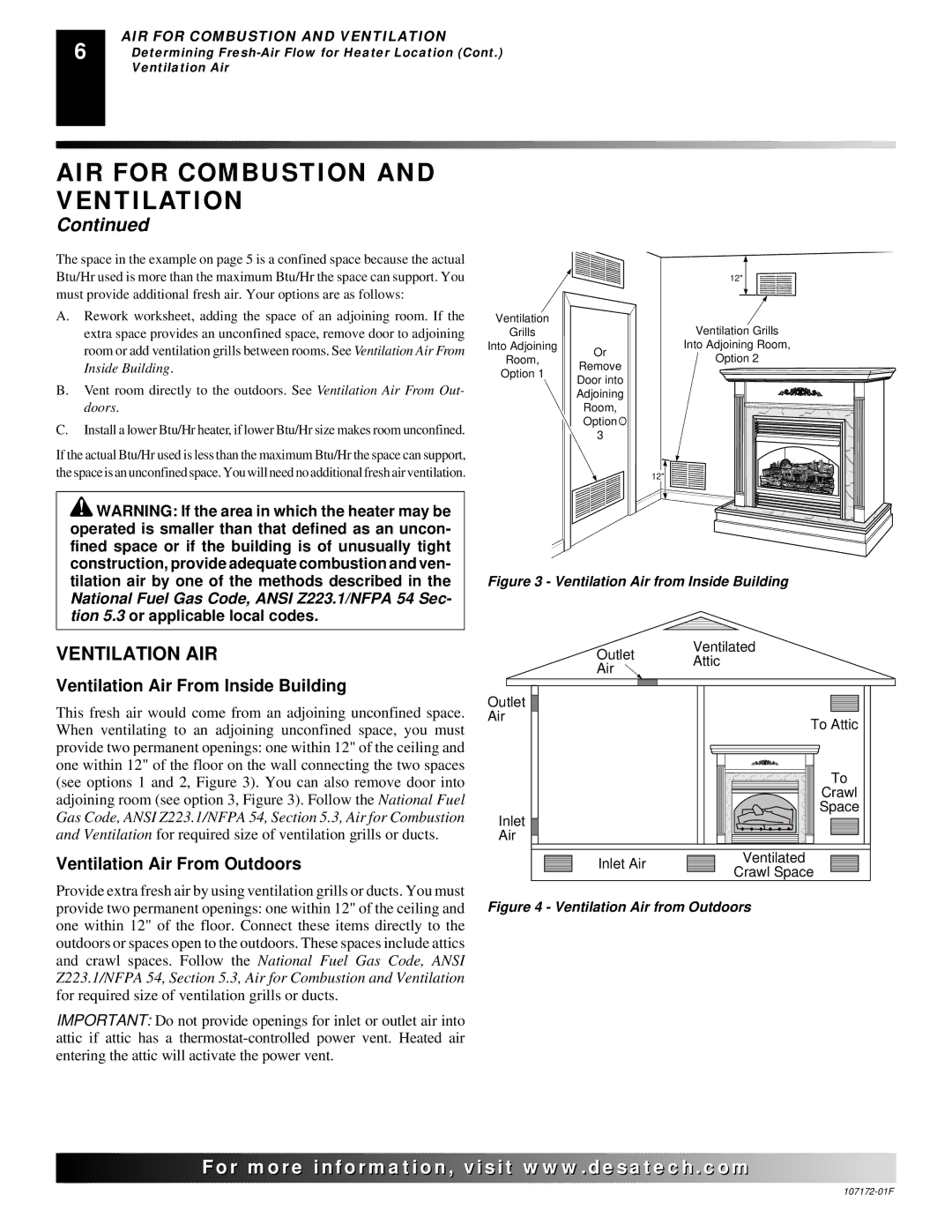EFS33PR specifications
Desa EFS33PR is an innovative electric fireplace solution designed to bring warmth and ambiance to modern living spaces. With its sleek design and advanced features, this unit stands out as a versatile and efficient heating appliance. One of the main highlights of the EFS33PR is its realistic flame effect, which utilizes cutting-edge LED technology to simulate the appearance of a glowing fire. This feature allows users to enjoy the visual appeal of a traditional fireplace without the mess, smoke, or maintenance associated with wood-burning units.Another significant characteristic of the EFS33PR is its adjustable heat settings. The fireplace offers multiple heat output levels, allowing users to customize the warmth according to their preferences and the specific requirements of their space. This flexibility ensures efficient energy consumption, making the fireplace not only a stylish addition to home decor but also a practical heating solution.
The EFS33PR is designed with user convenience in mind. It comes equipped with a remote control, enabling users to operate the fireplace from the comfort of their sofa or bed. This added convenience is particularly appreciated during colder months when getting up to adjust settings may not be ideal. Additionally, the fireplace is equipped with a timer function, allowing users to set it to turn on or off after a specified duration.
Safety is another priority in the design of the Desa EFS33PR. The unit is built with overheat protection, ensuring that it operates within safe temperature limits. This feature provides peace of mind, especially in homes with pets or children, as it minimizes the risk of accidental burns or overheating.
The EFS33PR is also designed for easy installation. It can be mounted on the wall or placed in a corner, making it a versatile option for different room layouts. Its contemporary aesthetic is complemented by a range of color options, ensuring it can blend seamlessly into various interior styles.
In conclusion, the Desa EFS33PR electric fireplace combines modern technology, convenience, and safety features, making it an ideal choice for those seeking an efficient and stylish heating solution. Whether enhancing the decor of a living room or adding warmth to a bedroom, the EFS33PR offers a perfect blend of functionality and elegance.

